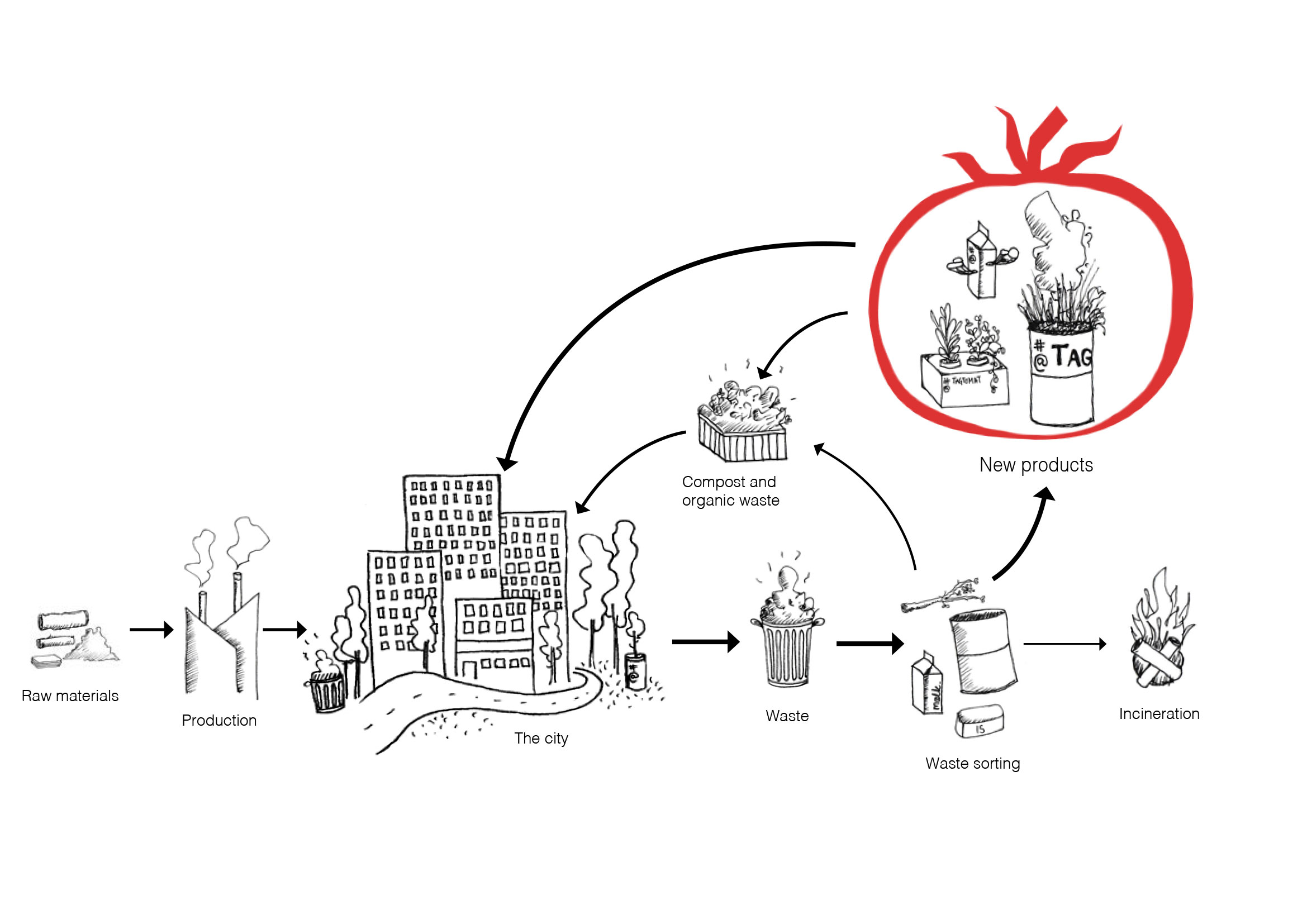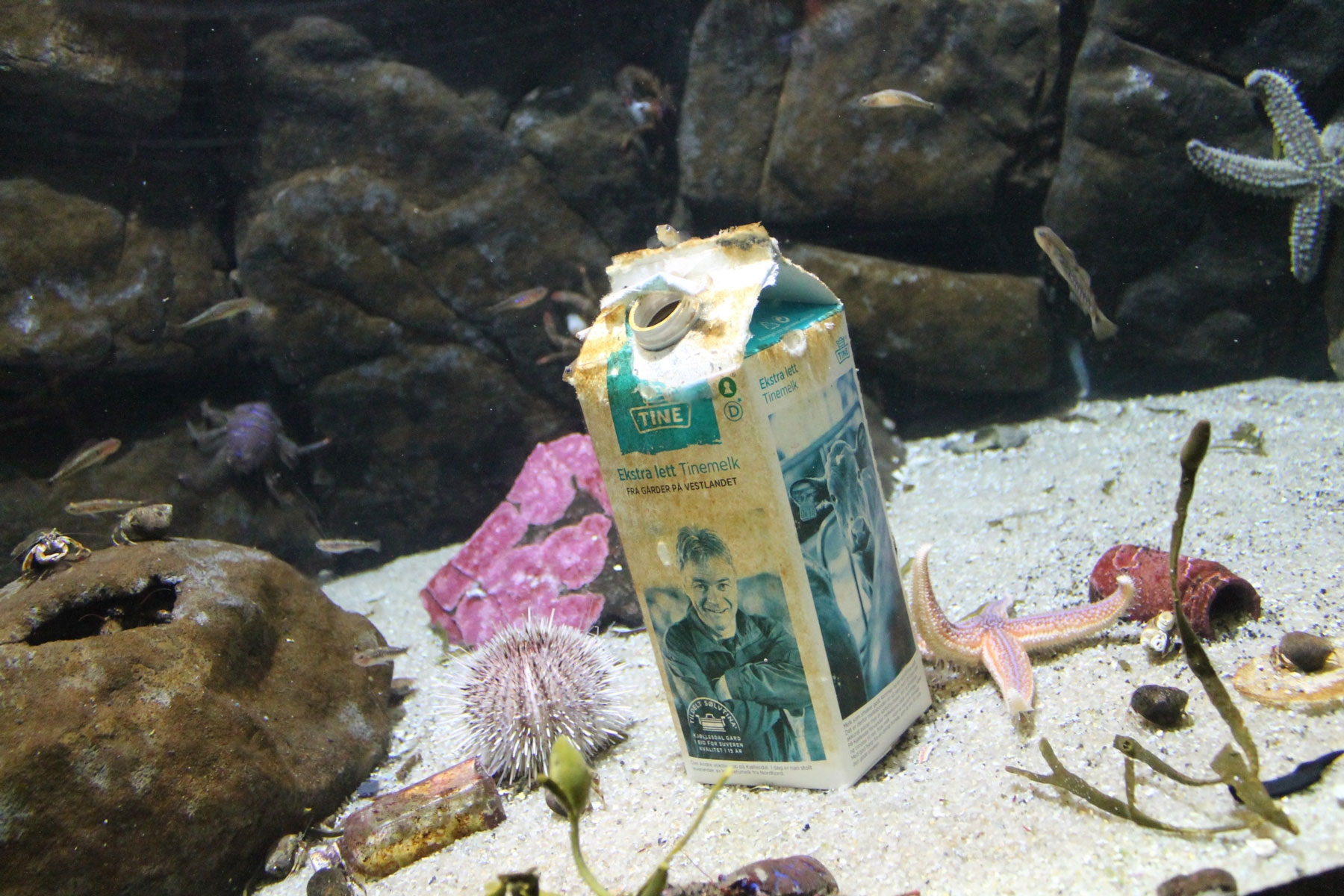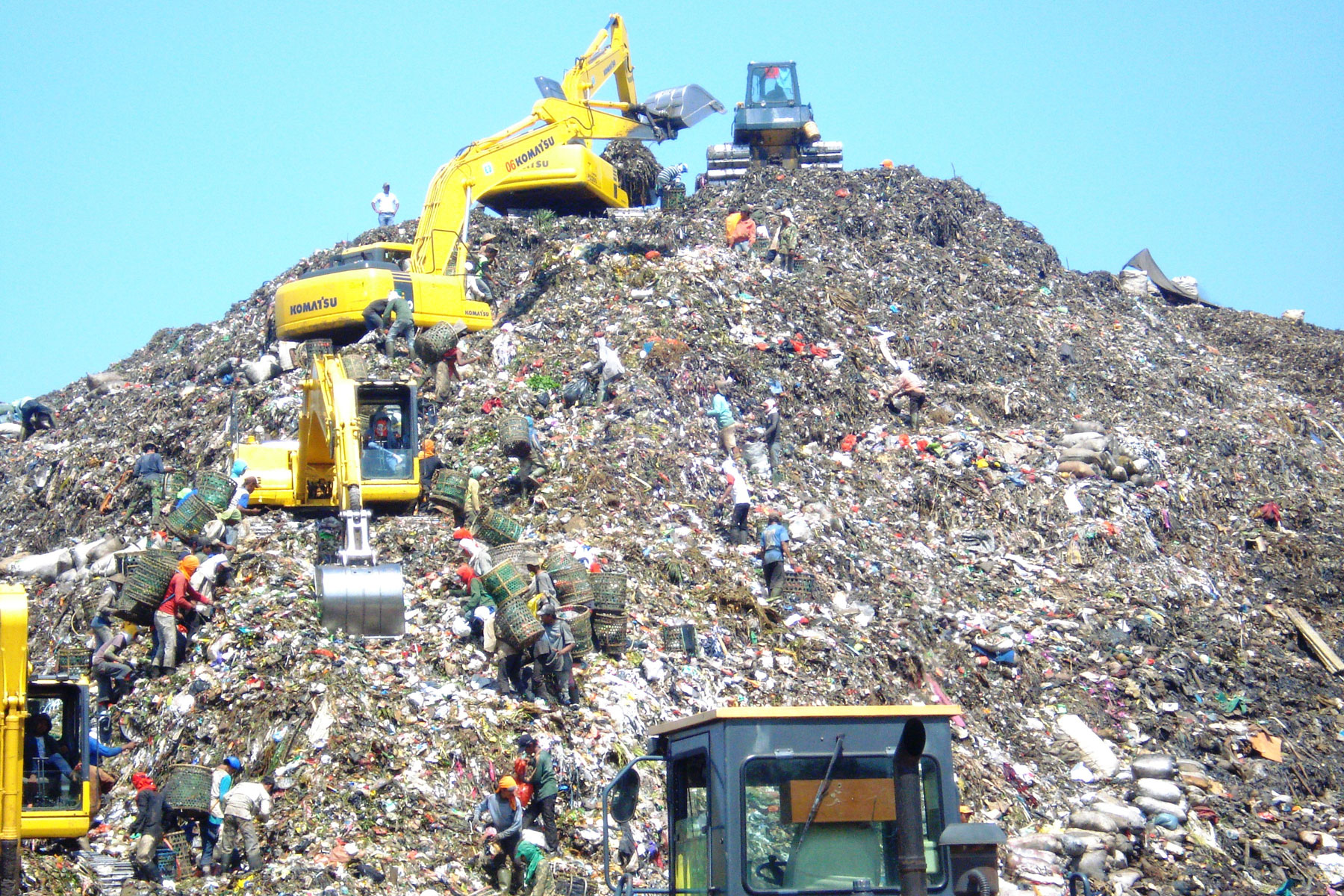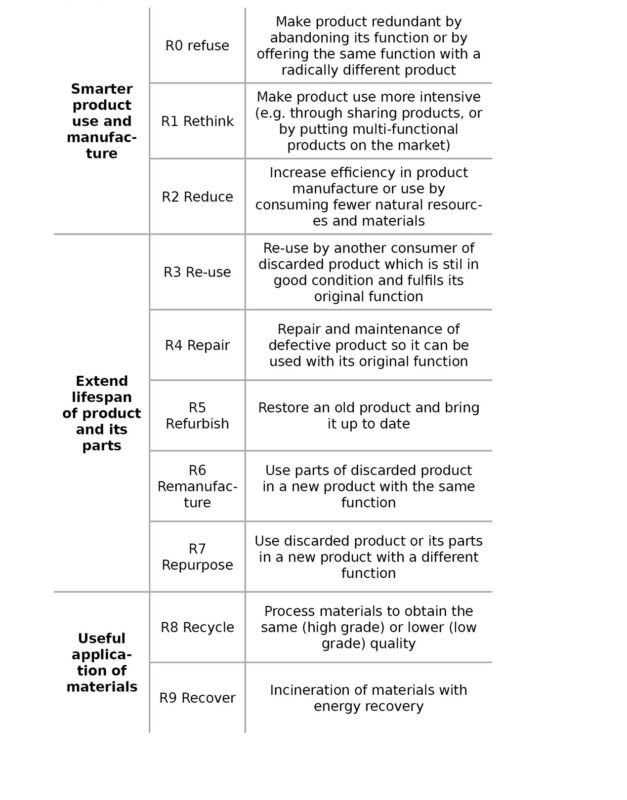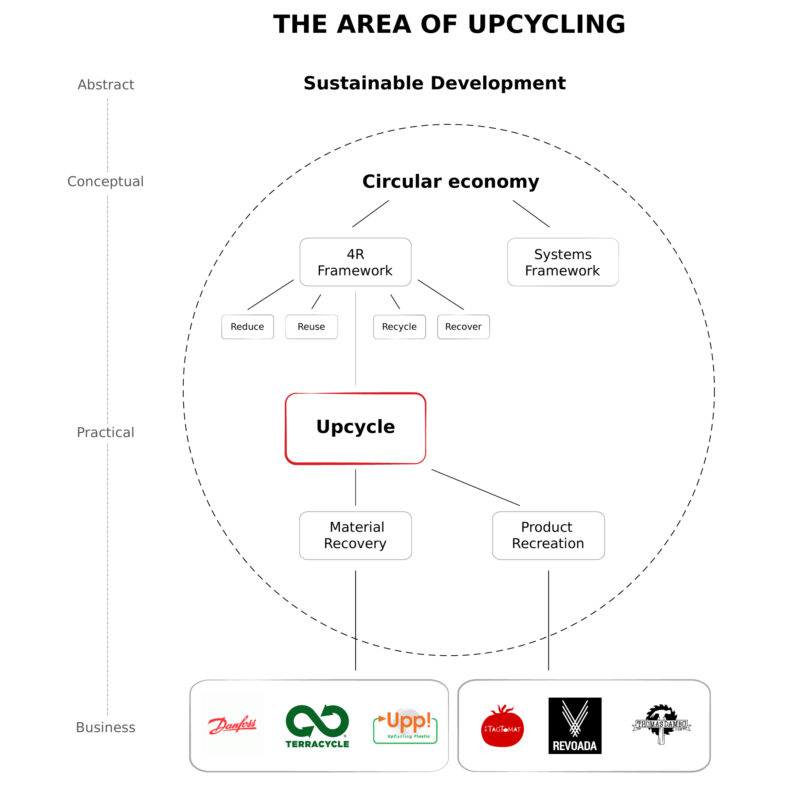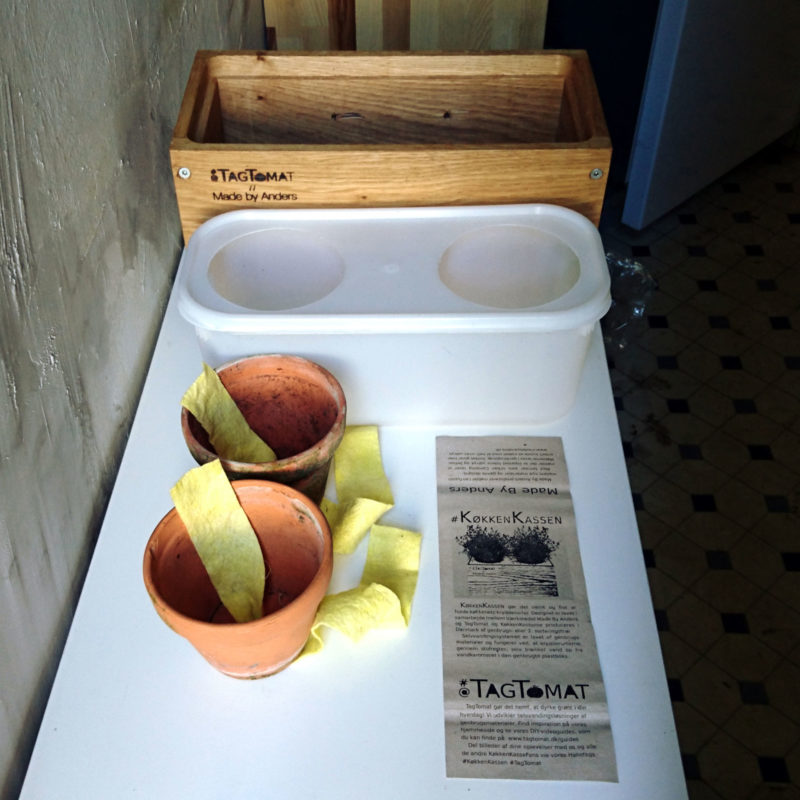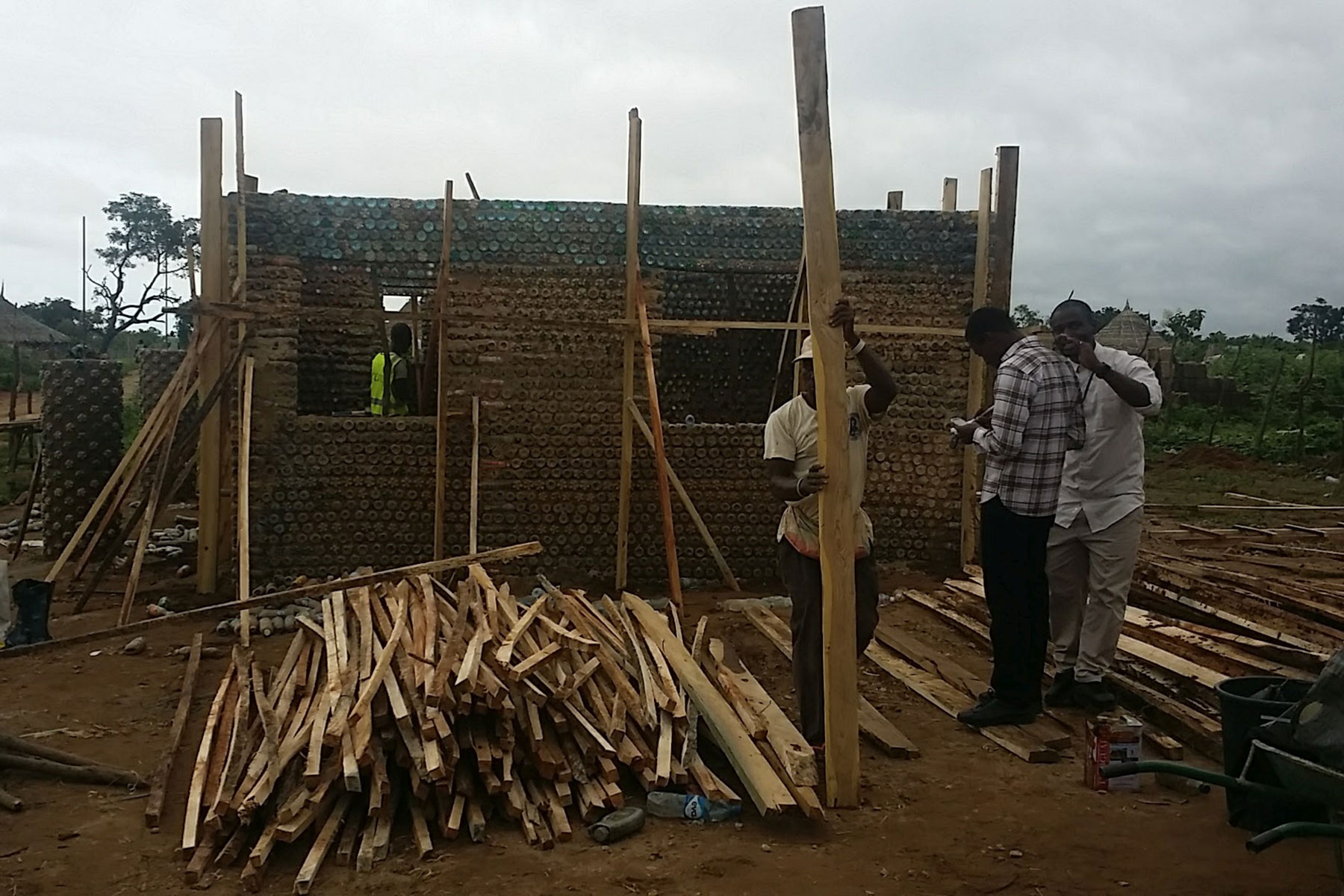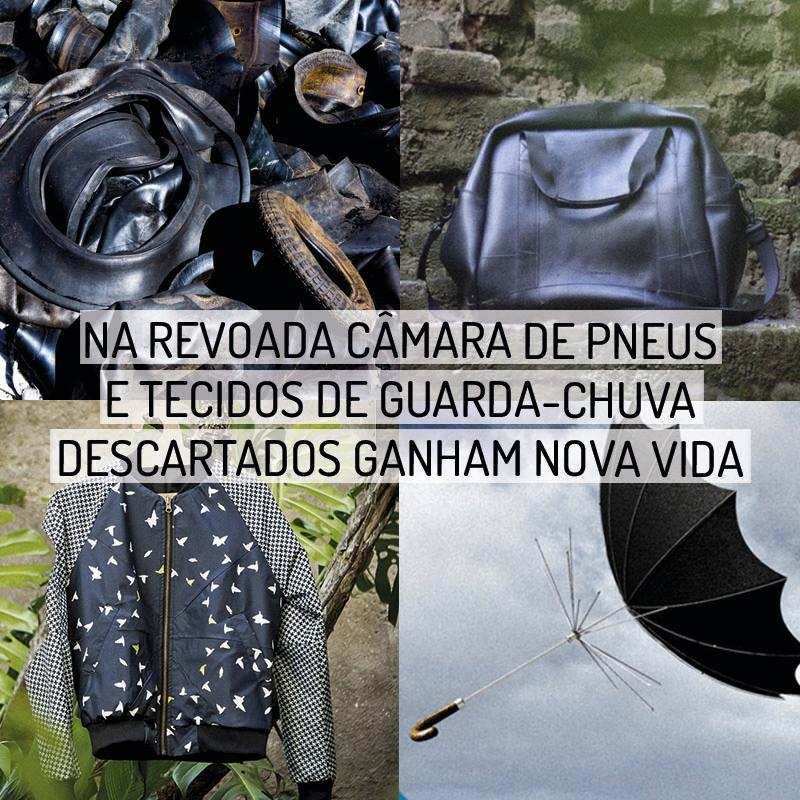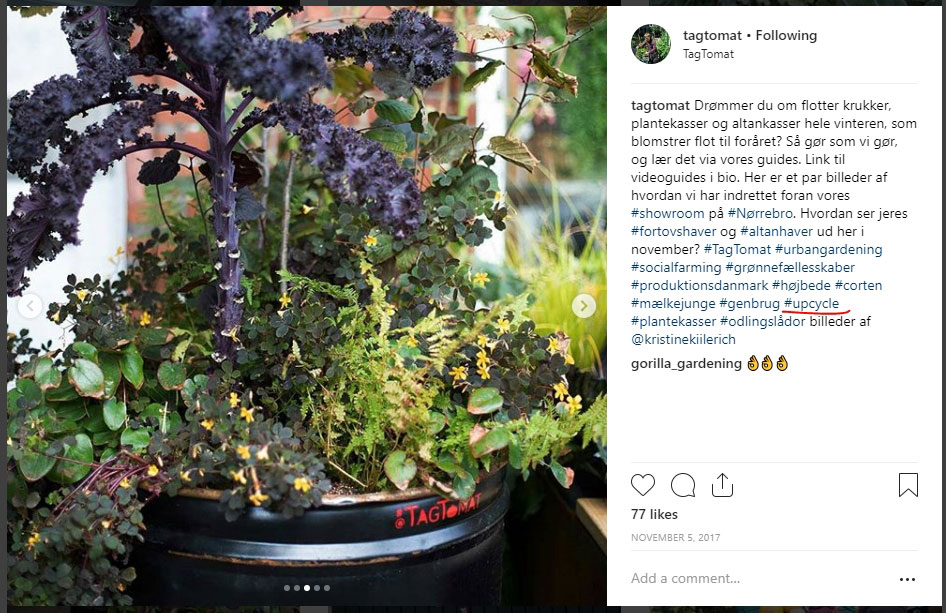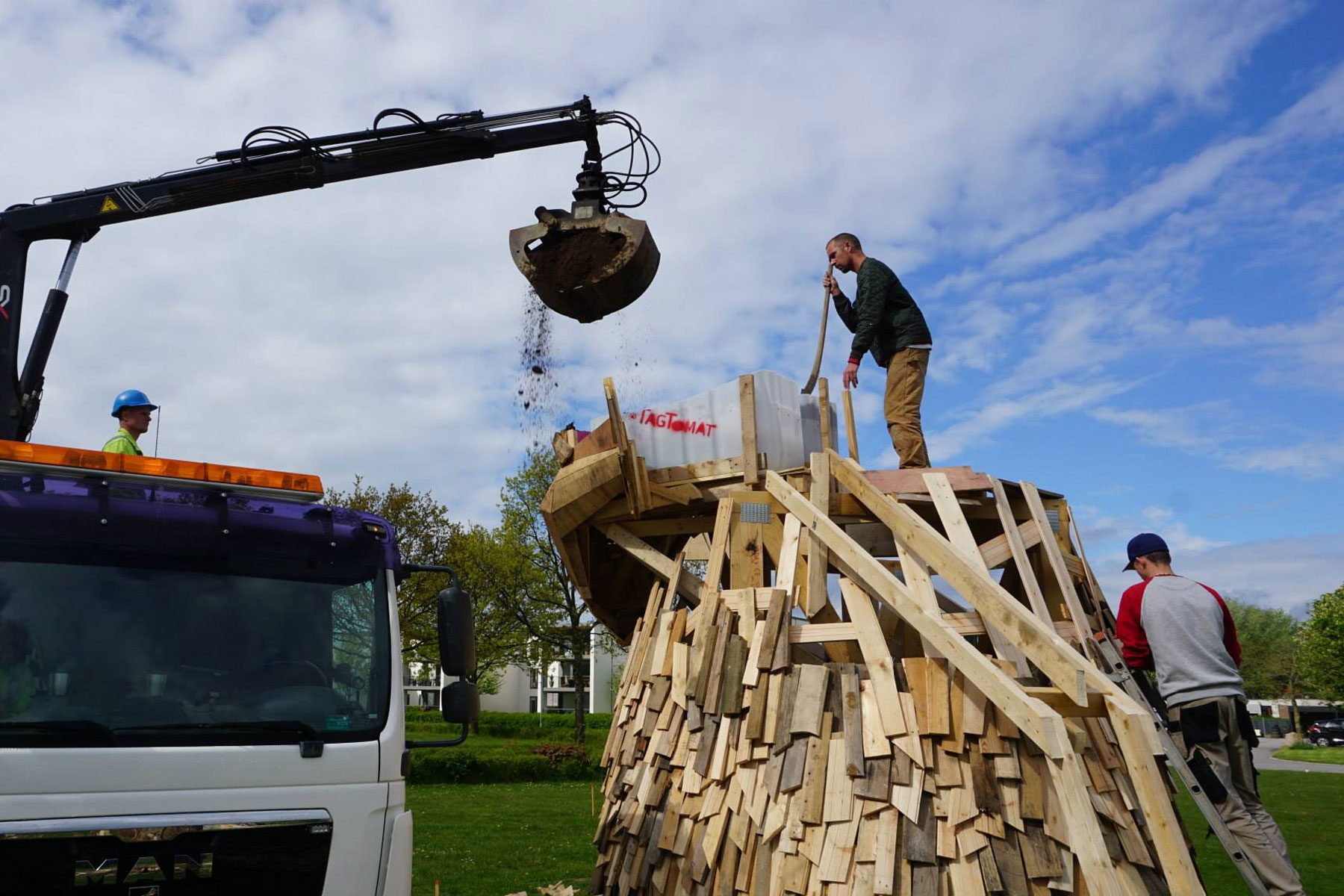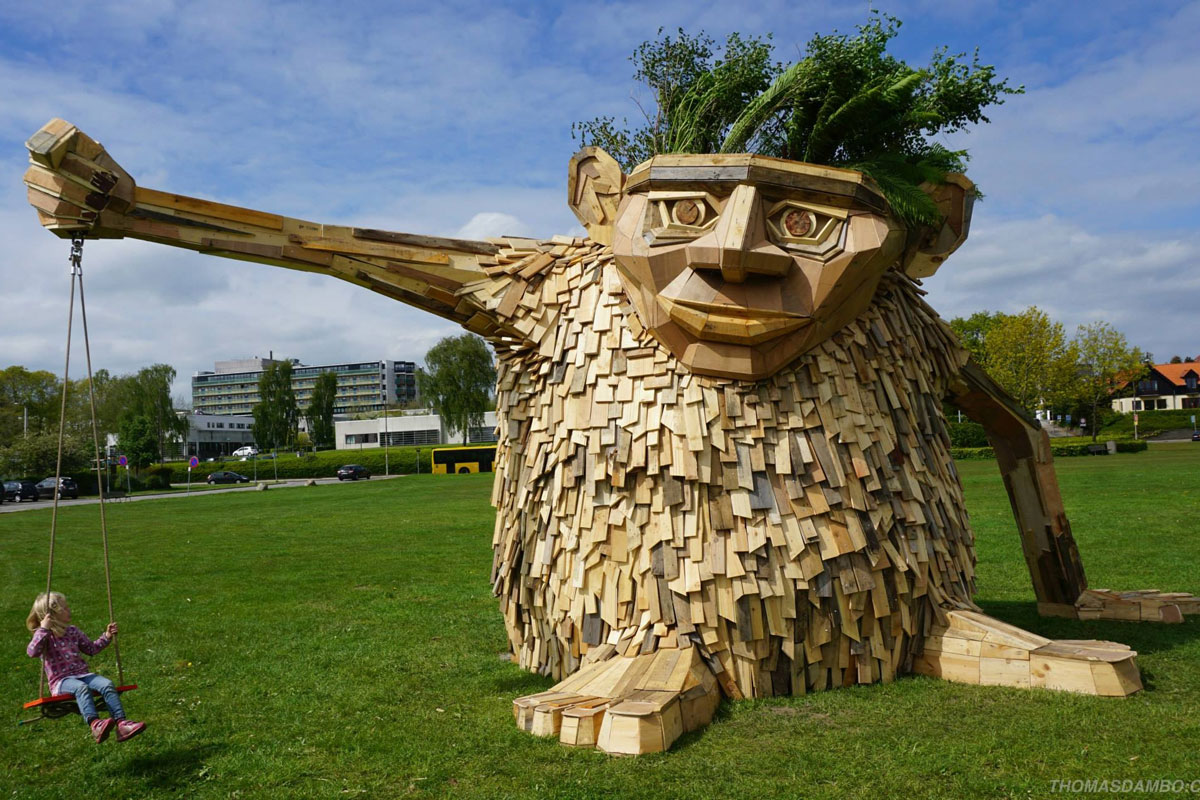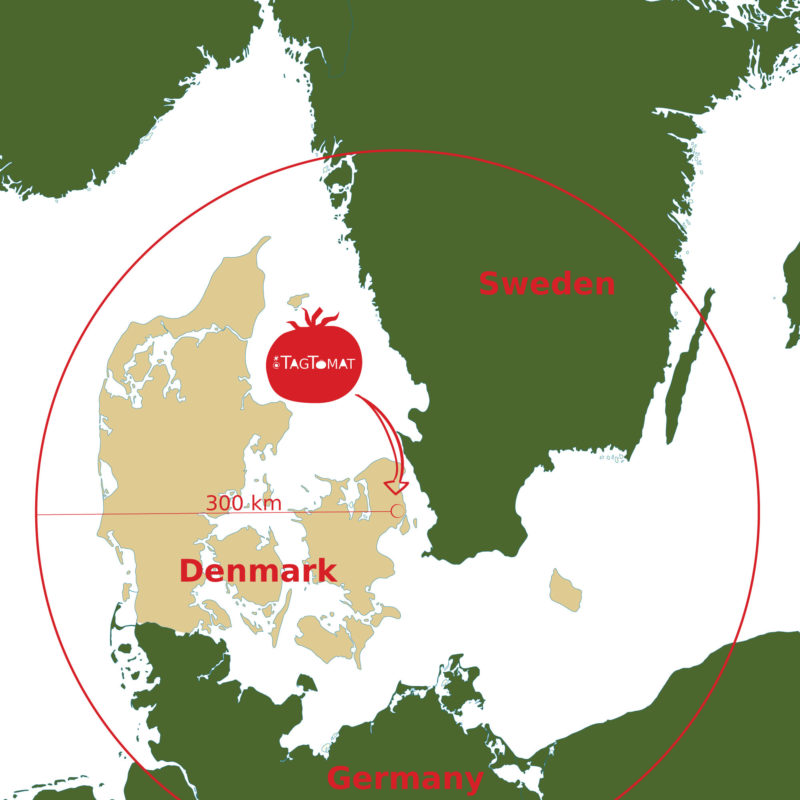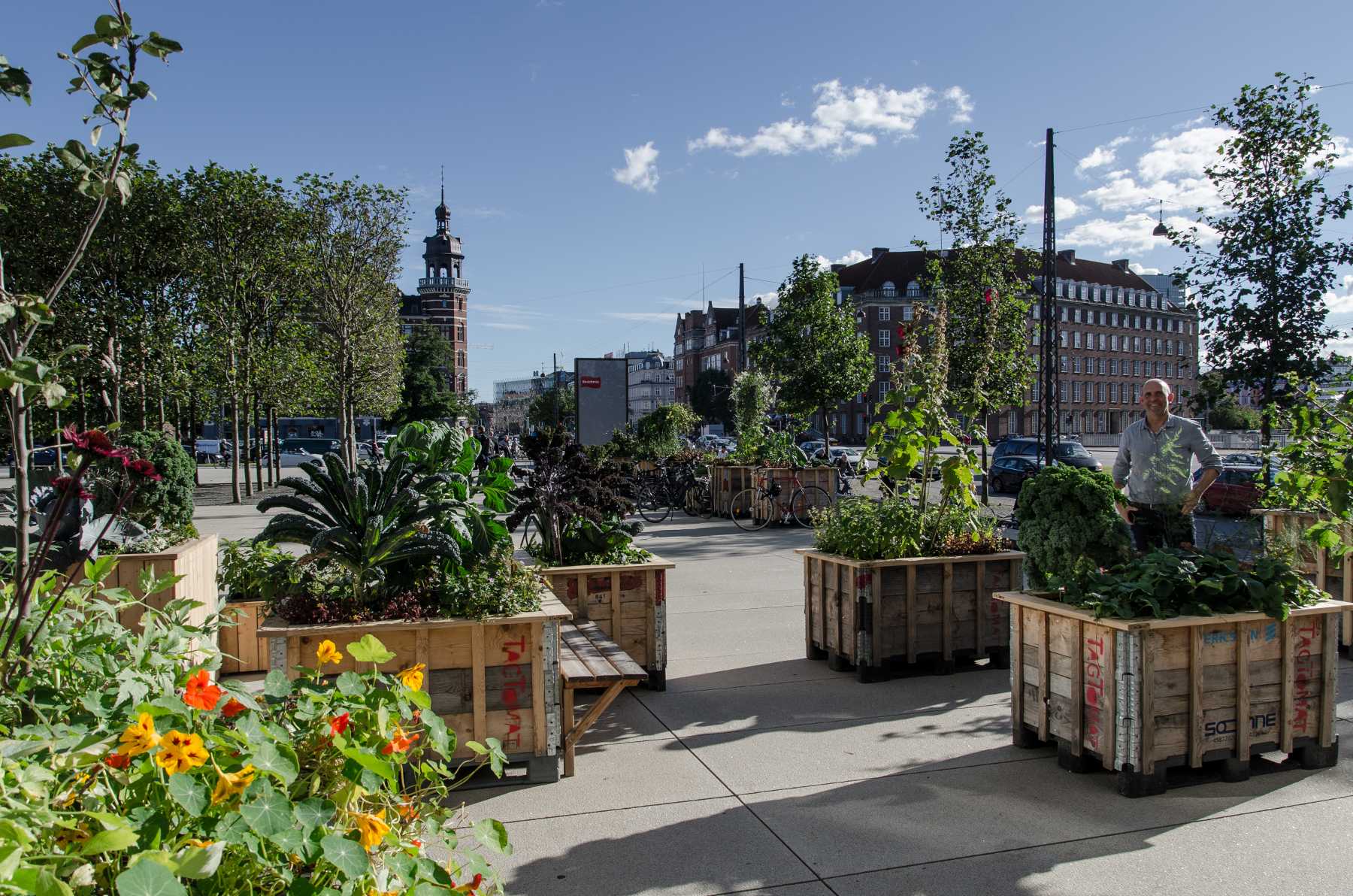A new series of blog posts
Since the beginning of TagTomat, the working philosophy has been based around using existing and standardized materials for products in urban gardening. Ideally, these are used materials taken from local companies which were giving a valuable second life in urban gardens. Taking a used material and converting it into something new with more value and/or quality is called upcycling1 . If upcycling is not possible, TagTomat also repurposes materials or uses products with an industrial standard (like A4 paper or EPAL pallets).
In a series of blog posts, we are going to unravel the world of upcycling and its meaning for TagTomat and perhaps also for you as a reader. This first blog post is dedicated to the question: ‘What is Upcycling?’. It sounds like a simple question, but there is some history behind its meaning and academics, businesses and individuals do not always agree on the specific meaning and impact of the word is.
Milk package in sea, Creative commons image, via: pxhere.com
The history of upcycling
Historical upcycling
Upcycling is actually nothing new and has been done for thousands of years and one could even say that it’s a natural part of our being1. The making of tools played a big role in what made us humans2 and the first materials for making tools were wasted items of nature (rocks and sticks).
Until the industrial revolution around the 18th century, it was very common to use what was at one’s disposal1, but especially after the second world war, starting from 1950’s, a paradigm shift happened in the developed world, turning away from product design for indefinite maintenance and towards quick replacement and disposing of the old3.
Although this ‘throw away’ paradigm is still present today, in 1987 the UN World Commission on Environment and Development, spread awareness of the need for sustainable development with the Brundtland report. Sustainable development was defined as: “development that meets the needs of the present without compromising the ability of future generations to meet their own needs.” Later on the UN also adopted the needed balance in development in three dimensions; Environmental, Social and Economic4.
Waste mountain Bantar Gebang in Indonesia, Creative Commons image, via: upload.wikimedia.org
Modern day upcycling
In 1994 the word upcycling was first recorded(literally) on the German engineer Reiner Pilz1 who said the following: “Recycling, I call it down-cycling. They smash bricks, they smash everything. What we need is upcycling, where old products are given more value, not less.”
The term then spread with a slow but exponential speed to other industrial sectors like fashion, plastic recycling, organic waste, automotive, electronics and others. You can imagine that with this spreading to very different sectors, the word upcycle is used different ways. For example, the biggest and most successful sector is the fashion industry who sees upcycling as refashioning of old clothes into new trend appropriate clothes by recolouring/repatching/stitching them. Yet, a completely different sector around plastic recycling focuses more on the technical question on how to improve the quality of plastics waste by adding new elements1.
Still a the big majority of the scientific articles on upcycling, can agree on a general definition of: (waste/used) materials are converted in order to maintain or have increased value and/or quality in a second and new life-cycle1.
The area of upcycling
“ “Going green” can be profitable through the expanding market of environmental goods and services. Recycling market offers a competitive ‘sink’ as an alternative to increasingly expensive landfill, incineration, and other treatment options.“
Upcycling and Circular economy
Upcycling is a part of a large sustainable development concept called circular economy (or CE in short). After a comprehensive literature search on CE, researchers Kirchherr, Reike & Hekkert5 “defined [Circular economy] … as an economic system that replaces the ‘end-of-life’ concept with reducing, alternatively reusing, recycling and recovering materials in production/distribution and consumption processes.” At its core it has a big and holistic aim, namely to create “Simultaneously … environmental quality, economic prosperity and social equity, to the benefit of current and future generations.” This concept is relatively new and trending, and therefore scientists and also companies are divided on its meaning and use as well. The same researchers5 also distinguished two frameworks: the 4R(Reduce, Reuse, Recycle, Recover) framework and the systems framework.
The first framework is based on the hierarchical Reduce, Reuse, Recycle and Recover, where an organisation/business should aim for the highest option(reducing) and move down if that action is not possible for a certain product. On the other hand, the systems framework focuses on a fundamental shift in thinking of resource flows instead of improving parts in a process towards one of the R’s5.
Upcycling especially relates to the 4R framework, where it can be put in between reuse and be a better form of recycling 1,3. The Dutch Environmental Assessment Agency6 even explains a framework with 9 R’s where Upcycling is very similar to number 7 repurpose: “use discarded product or its parts in a new product with a different function. ”(see table below) This is why you can find the terms upcycling and upcycle often in Circular Economy literature.
Circulatory strategies within the production chain in order of priority, Derived from the Netherlands Environmental Assessment agency5
On the other hand, the systems framework of CE tends to focus on products/materials having a singular purpose3. When that purpose is fulfilled or can’t be fulfilled anymore, it directly has to go back to its original manufacturer. In the systems concept by the Ellen MacArthur Foundation7 unchangeability of a product (or “power of the inner circle”) is an important factor.
In a final holistic system, this makes sense and is the best solution, but the private sector currently tends to see circular economy as a long term project4. Additionally, there are still barriers like underdeveloped technologies for CE and financiel high costs to start the whole change7. In the present, however, upcycling could offer open-minded and faster solutions. The core concept of upcycling is also a bit smaller and is focused on the contemporary resource consumption3, additionally it can also tackle environmental, economic and social issues which I will explain fully in the next blog.
The two viewpoints of upcycling
Upcycling can also be divided into two dominant viewpoints. The first one is focused on the “material recovery” and aims to improve a used material for further and better use in new life-cycles1. The majority of the area covers articles on plastics, by explaining technical plastic improvements, like creating a new material by combining wasted plastic with a new/other material to give it new and better qualities.
The second viewpoint is focused on “product recreation”. This is done by any kind of transformation of used/wasted materials and products to give them higher values and qualities1 . This area is dominated by articles focused on the fashion industry and usually relates to either new business models or encouragement of individuals or Small/medium sized companies to upcycle. TagTomat could be seen on this part of upcycling, with for example the transformation of an ice cream bucket into the watering system of a plant case.
The area of upcycling visualized
Kitchen planter with upcycled Ice cream box by TagTomat
Examples of good upcycling initiatives
This chapter is giving some examples to get a more concrete grasp of the area of upcycling. It shows how diverse upcycling can be and starts by showing examples of material recovery and product recreation.
Waste is worth money!
There’s also a lot of waste. In the European Union in 2017 the waste was:
8,166,431 tonnes of plastic worth on average €315,50 per tonne
39,117,728 tonnes of paper worth on average €158.30 per tonne
5,384,892 tonnes of glass worth on average €52 per tonne
Material recovery
There is a big variety in methods of recovering materials especially plastic waste into new materials. To name a few examples, specific plastics can become illuminating material9, parts for a battery10 and partial concrete replacer/enhancer11. Additionally, used plastics can be enhanced once again for new/better properties12,13. Next to plastics, other materials are also examined like, carton boxes to become material to clean up oil spills14 and a combination of plastic bottles and agricultural waste for the construction of houses in developing countries15. Also on a larger scale there are researchers that strives to upcycle the whole bio-waste stream of Norway16.
Building with recycled plastic in Nigeria, Creative commons image, via: commons.wikimedia.org
Product recreation
On product recreation, the projects involved are usually more ‘bottoms-up’, coming from small and/or local companies or individuals. This is also how the idea of TagTomat started. A local initiative to create a garden inside of a residential area, grew in to a company. Additionally, TagTomat also uses used products with the purpose of creating new value in the shape of urban gardens. Other examples of product recreation are Online market places like Etsy.com. These are very popular among upcycling individuals or small business in selling fashion, furniture, jewellery, etc. Researching engineer Bruna Todeschini17, analysed the business models of 8 sustainable fashion start-ups and a few of them also work with upcycling. The Preza is a Brazilian start-up that uses wood waste from luxury furniture manufacturers in the area and creates both unique high-end sunglasses and corporate-branded gifts. The Italian start-up called Orange fiber produces high quality textiles which are for 100% created out of Citrus juice by-products.17
Finally, Revoada is another Brazilian start-up creating “backpacks, wallets, and briefcases using the inner tubes of large vehicle tires and discarded umbrellas as substitutes to leather and nylon.” They sell their products online and with their gained knowledge on upcycling, they started consulting other businesses on green product development on the side.17
Upcycled tires and umbrella to fashion, Image courtesy by Revoada, you can visit them via: www.revoada.com.br
Majority world
Also in the developing or Majority world, upcycling is happening. In an investigation trip to Tanzania, researchers Klocker, Mbenna and Gibson18 documented the popular craft of boys and young adults creating footballs out of plastic bags which are accessible in abundance and causing environmental issues. Curiously, the craft was not necessarily done out of survival or poverty, but enjoyment instead. Additionally, because of popularity in practice, the making of plastic bag footballs, the craft is considered a fluid technology “perpetually incomplete, always in-the-making and functional in diverse states.”
Popular media
Social media and various blogs also dedicate attention to upcycling and presumably these take up the big majority of all efforts (written, photographed, filmed, etc.) on the term of upcycling and therefore shouldn’t be neglected. On Instagram #upcycle has 2,2 million messages devoted to it. Youtube is also full of upcycling (DIY) videos with the most viewed video called:”Ways to Upcycle Old T-Shirts! – AndreasChoice” having 6.6 million views. Next to that, I found that you could scroll almost indefinitely through Facebook, Pinterest and Twitter on the using the keyword or hashtag of ‘upcycle’. Unfortunately, no concrete numbers were publicly provided on search results by those social media.
There is also a number of blogs dedicated to upcycling and some of them even publish articles more than weekly, like upcyclethat.com, myrepurposedlife.com/blog/ or upcyclist.co.uk/. Not only do the owners write on interesting upcycling projects of themselves and/or others, but they also sell products or even provide consultancy.
#upcycle @TagTomat, Via instagram: instagram.com/TagTomat/
Local upcycling
Also in Copenhagen, TagTomat is not the only one doing upcycling.
Thomas Dambo is an internationally known Danish artist working solely with wasted materials to create art and furniture19. He is probably most known locally for his work of “the six forgotten Giants” near Copenhagen. Which are 6 giant sculptures made out of scrap wood hidden in the forests near Rødovre, Hvidovre, Vallensbæk, Ishøj, Albertslund and Høje Taastrup. Via the maps on Thomas’ website you can go out on a ‘treasure hunt’ to find them all20. Next to giant sculptures, he is internationally known for putting up around 3000 birdhouses in various cities all over the world and designing an interactive installation called Happy Wall19. And actually TagTomat and Thomas Dambo used to have workspaces at the same address in Østerbro in 2014, and TagTomat delivered the “plant box” for the hair of Troels the Troll back in 2015.
Another local example is Guldminen21, a lab for recycling, upcycling, repairing, redesigning and redistribution where companies and local organisations work with the wasted materials delivered to the Amager Recycling station. This experiment runs from 2015 to 2018 with the goal to gain experiences/insights in how recycling can be done in the future, yet on the side, there are small businesses selling new products out of old clothes, wood, tools, etc.
The construction of Troels the Troll using upcycled wood with plant box from TagTomat
Troels the Troll in finished form, both images have been provided by Thomas Dambo, you can visit his website via: thomasdambo.com
Conclusion
“Should the global population reach 9.6 billion by 2050, the equivalent of almost three planets could be required to provide the natural resources needed to sustain current lifestyles.”
If we had to sum up upcycling, we could say that it’s been done for a very long time, perhaps even since the start of humankind. Seeing possibilities in waste to create more value is quite natural to us and can be a good solution and start for making a change towards a more sustainable world. While we upcycle, companies and organisations can develop technologies, gather finances and set up resource systems that are needed for a full system wide circular economy.
I have shown multiple examples of different ways in which companies and individuals can upcycle, it is done far away from us in different cultures and there are examples in Copenhagen. Upcycling can be ‘high-tech’ or can be done at home. TagTomat also tries to upcycle as much as possible and this is done by product recreation. It is about getting waste materials and transforming them into valuable products which will have a second life in the city, but this time as urban garden products, both big and small. By doing so waste is saved from the incineration plants. More specifically an upcycled product by TagTomat is:
- Done with materials of local partnerships (between 0-300 km away, see the illustration below)
- Fitted to existing Industrial Standards (A4 paper, EPAL pallets, etc.)
- Suitable to be done both at home (DIY) or by the TagTomat for you
In the next blog, I will talk about why we should upcycle? It is the next important question you should ask, because it will explain the impact it can have in our lives and on the world around us. As I mentioned before, I will involve the environmental, economic and social benefits of upcycling and how upcycling can be used in the wrong way.
Map for collection of upcycled material by TagTomat
References
1. Sung, K.,(2015) International Conference on Environmental, Cultural, Economic and Social Sustainability, At Venice, Volume: 17, p.28-40
The quote can be found on page 30
The terms Material recovery and Product recreation can be found on page 33
2. Washburn, S. (1960). Tools and Human Evolution. Scientific American, 203(3), 62-75. Retrieved from https://www.jstor.org.zorac.aub.aau.dk/stable/24940615
3. Bridgens, B., Powell, M., Farmer, G., Walsh, C., Reed, E., Royapoor, M., Gosling, P., Hall, J. and Heidrich, O. (2018). Creative upcycling: Reconnecting people, materials and place through making. Journal of Cleaner Production, 189, pp.145-154.
4. Kuhlman, T. and Farrington, J. (2010). What is Sustainability?. Sustainability, 2(11), pp.3436-3448.
5. Kirchherr, J., Reike, D. and Hekkert, M. (2017). Conceptualizing the Circular Economy: An Analysis of 114 Definitions. Resources, Conservation & Recycling, 127, pp.221-232.
Both quotes can be found on page 229.
6. PBL Netherlands Environmental assessment agency, 2017. Circular Economy: Measuring Innovation in the Product Chain. Policy report.
The original table can be found on page 5 of the report.
Available at: https://www.pbl.nl/sites/default/files/cms/publicaties/pbl-2016-circular-economy-measuring-innovation-in-product-chains-2544.pdf
7. Ellen MacArthur Foundation (2013), Towards the Circular Economy Vol.1.
Quoted term can be found on page 7. available at: https://www.ellenmacarthurfoundation.org/publications/towards-the-circular-economy-vol-1-an-economic-and-business-rationale-for-an-accelerated-transition
8. de Jesus, A., & Mendonça, S. (2018). Lost in Transition? Drivers and Barriers in the Eco-innovation Road to the Circular Economy. Ecological economics (Amsterdam), 145, 75-89. doi: 10.1016/j.ecolecon.2017.08.001
9. Aji, M., Wati, A., Priyanto, A., Karunawan, J., Nuryadin, B., Wibowo, E., Marwoto, P. and Sulhadi (2018). Polymer carbon dots from plastics waste upcycling. Environmental Nanotechnology, Monitoring & Management, 9, pp.136-140.
10. Kim, P., Fontecha, H., Kim, K. and Pol, V. (2018). Toward High-Performance Lithium–Sulfur Batteries: Upcycling of LDPE Plastic into Sulfonated Carbon Scaffold via Microwave-Promoted Sulfonation. ACS Applied Materials & Interfaces, 10(17), Pp.14827-14834.
11. Jacob-Vaillancourt, C. and Sorelli, L. (2018). Characterization of concrete composites with recycled plastic aggregates from postconsumer material streams. Construction and Building Materials, 182, pp.561-572.
12. Kamleitner, F., Duscher, B., Koch, T., Knaus, S. and Archodoulaki, V. (2017). Upcycling of polypropylene-the influence of polyethylene impurities. Polymer Engineering & Science, 57(12), pp.1374-1381.
13. Hassan, M., Taimur, S. and Yasin, T. (2017). Upcycling of polypropylene waste by surface modification using radiation-induced grafting. Applied Surface Science, 422, pp.720-730.
14. Yuan, S., Zhang, J., Fan, H. and Dai, X. (2018). Facile and sustainable shear mixing/carbonization approach for upcycling of carton into superhydrophobic coating for efficient oil-water separation. Journal of Cleaner Production, 196, pp.644-652.
15. Oyinlola, M., Whitehead, T., Abuzeinab, A., Adefila, A., Akinola, Y., Anafi, F., Farukh, F., Jegede, O., Kandan, K., Kim, B. and Mosugu, E. (2018). Bottle house: A case study of transdisciplinary research for tackling global challenges. Habitat International, 79, pp.18-29.
16. Egelyng, H., Romsdal, A., Hansen, H., Slizyte, R., Carvajal, A., Jouvenot, L., Hebrok, M., Honkapää, K., Wold, J., Seljåsen, R. and Aursand, M. (2018). Cascading Norwegian co-streams for bioeconomic transition. Journal of Cleaner Production, 172, pp.3864-3873.
17. Todeschini, B., Cortimiglia, M., Callegaro-de-Menezes, D. and Ghezzi, A. (2017). Innovative and sustainable business models in the fashion industry: Entrepreneurial drivers, opportunities, and challenges. Business Horizons, 60(6), pp.759-770.
18. Klocker, N., Mbenna, P. and Gibson, C. (2017). From troublesome materials to fluid technologies: making and playing with plastic-bag footballs. cultural geographies, 25(2), pp.301-318.
The quote can be found on page 313
19. Thomasdambo.com. (2015). About | Thomas Dambo. [online] Available at: https://thomasdambo.com/about/ [Accessed 1 Oct. 2018].
20. Thomasdambo.com. (2015). Forgotten Giants. [online] Available at: https://thomasdambo.com/works/forgotten-giants/ [Accessed 1 Oct. 2018].
21. Guldminenkbh.dk. (2018). Guldminen. [online] Available at: https://www.guldminenkbh.dk/ [Accessed 21 Sep. 2018].
References from quotes
A. Mohanty, C. from UN Centre for Regional Development 2011 Reduce, Reuse and Recycle (the 3Rs) and Resource Efficiency as the basis for Sustainable Waste Management.
Via: https://www.un.org/esa/dsd/csd/csd_pdfs/csd-19/learningcentre/presentations/May%209%20am/1%20-%20Learning_Centre_9May_ppt_Mohanty.pdf
B. Eurostat, 2017, Recycling – secondary material price indicator
Via: https://ec.europa.eu/eurostat/statistics-explained/index.php/Recycling_%E2%80%93_secondary_material_price_indicator
C. UN Sustainable Development, 2018, RESPONSIBLE CONSUMPTION & PRODUCTION: WHY IT MATTERS25
Via: https://www.un.org/sustainabledevelopment/wp-content/uploads/2018/09/Goal-12.pdf
Author
Hello, my name is Matthijs and I’m an intern at TagTomat and in the autumn of 2018 I’m going to work with the term upcycling and see what more it can bring to TagTomat and its community. I’m studying the master Sustainable Design at Aalborg University. The study teaches how to design concepts, products and services with a sustainable impact and how these designs (can be) fit into contemporary society.
Linkedin https://www.linkedin.com/in/matthijshofte
Upcycled products in urban context

